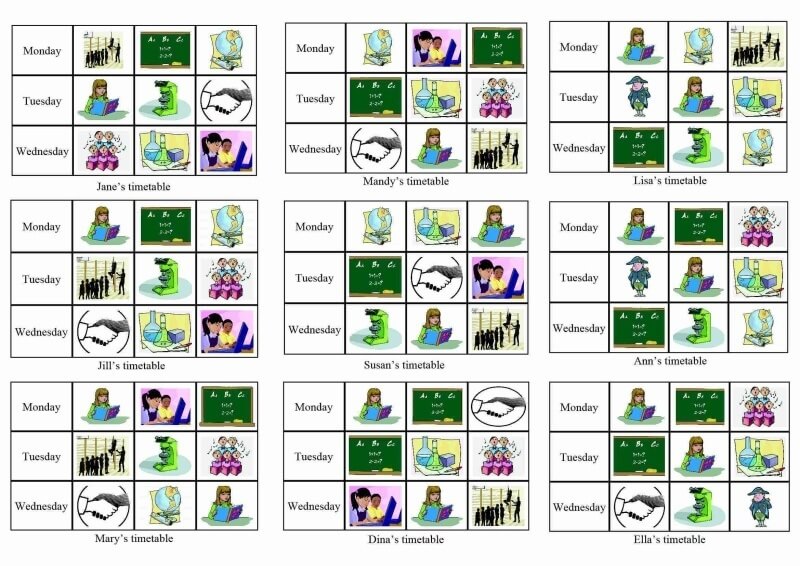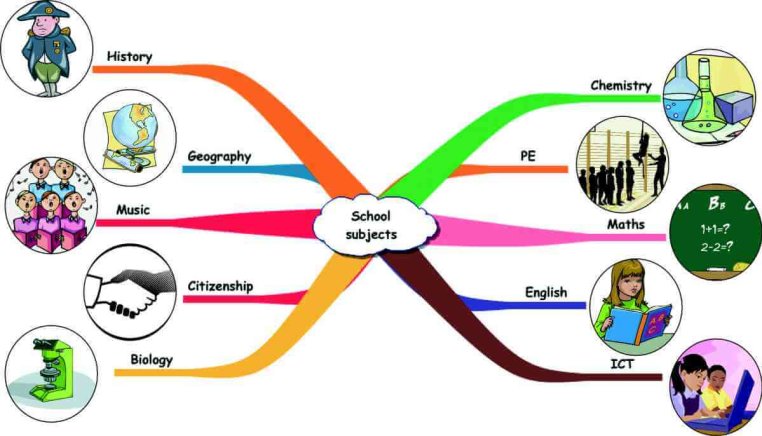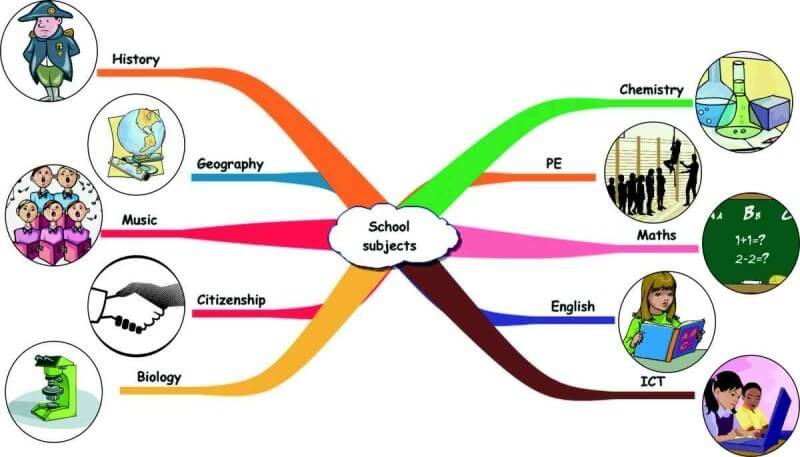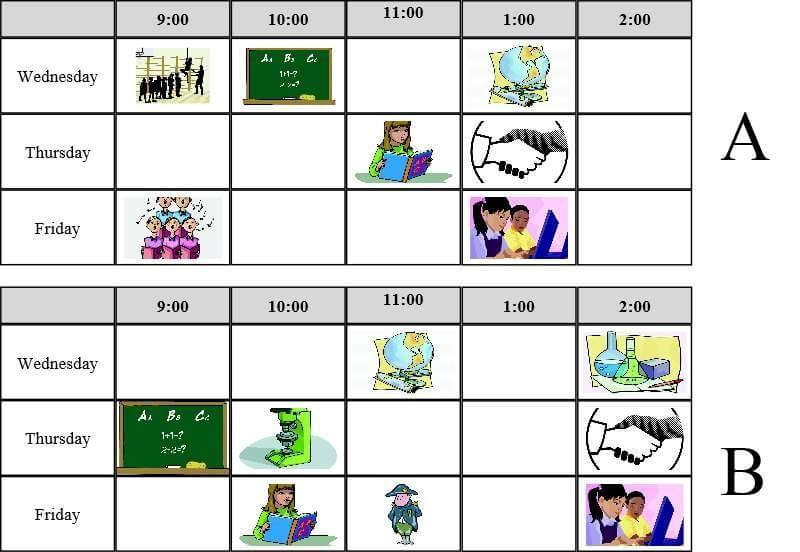Speaking activities are the most important component of English courses using communicative approach. However, it is very difficult to find quality speaking activities that would work. That is why I would like to publish a speaking activity here once a week. All the activities will be based on the recommendations given by Keith S. Folse in his wonderful book The Art of Teaching Speaking.
ADVERT:
[showmyads]
In the first post I offer you two pair speaking activities using school subjects and the verb HAVE. Let’s start!
School subjects – language for the activity
If you have not taught the school subjects yet, it is necessary to do so before you start the speaking activities. For the following tasks, your students need to know the following school subjects:
The other set of language your students need to know is the usage of the verb HAVE for questions like “What subject has she got on Monday?” or sentences like “She has chemistry on Monday at 11 o’clock.” You can find materials for teaching the verb HAVE GOT here. Once your students know the vocabulary and grammar you can move to the next part. Please, do not skip this step. Otherwise, your students might be either very quiet or use their native language to accomplish the tasks.
School subjects – speaking activities
The first activity is called Information gap. In this task students trade missing pieces of information to complete their sheet.
Information gap – in class
Hould up an example of the two sheets and explain that you’ll give each pair an A sheet and a B sheet.
Each sheet has a school timetable, but each sheet has only part of the timetable. Pairs need to work together to find out their missing information so that they end up with two complete and identical sheets.
Distribute the papers. Tell them not to look at each other’s papers. Let the students do the task.
Once they finish they can show each other the sheets and compare them.
Here are the two sheets:
[showmyadsa]
Battle: Find it first – in class
Print out one copy of the sheet (all 9 timetables) for each student.
Hold up one of the sheets and show everyone that the sheet contains nine timetables that are similar yet different. Students need to listen, think and then ask questions so that they can guess which picture the person is thinking about.
Put the students in groups of three.
Student A will pick a timetable and then students B and C will take turns asking yes/no questions to try to identify A’s timetable. B begins with a yes/no question. If A answers yes then B continues. If A answers no, then c asks a question. The goal is the to be the person who gets a yes answer to the a question such as, “Is it Jane’s timetable?”
After B or C has guessed A’s timetable, then A and C try to guess B’s timetable. Finally, A and B try to guess C’s timetable.
The winner is the student who guesses most timetables.
Here is the sheet each students should get:

I hope that you find the School subjects – speaking activities useful and that you will use them in your classes. You can download the worksheets in pdf here. All the pictures are in much better quality here:
School subjects speaking activities worksheet
Leave a comment
This site uses Akismet to reduce spam. Learn how your comment data is processed.




No Comments